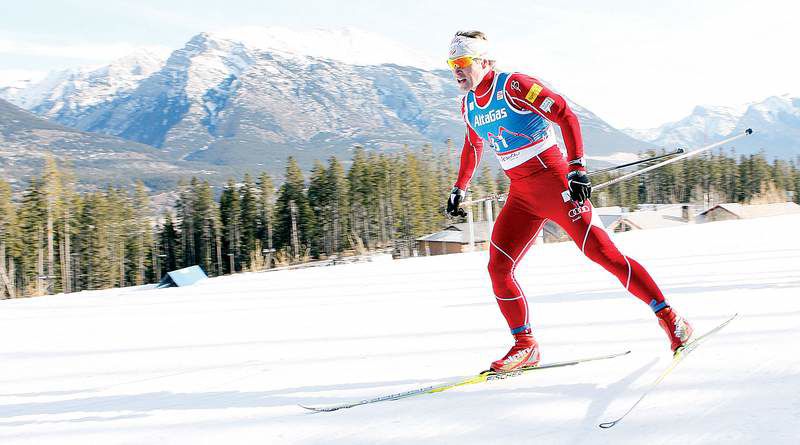For one American skier, an extra obstacle to overcome
Published 4:00 am Sunday, February 21, 2010

- American Kris Freeman skis during a World Cup men's 15-kilometer race earlier this month.
WHISTLER, British Columbia — Kris Freeman, America’s best men’s cross-country skier, admits he threw away two races this season. He stopped in the middle of one and quit the other altogether.
He was using the competition circuit as a laboratory, pricking his finger to read his blood sugar levels. Freeman is a Type 1 diabetic who needed to test his insulin strategy for the Winter Olympics.
If his blood sugar falls too low, he’ll feel shaky and lightheaded, and have trouble concentrating and reacting quickly. Too high and he’ll feel lethargic, lactic acid building up in his legs and slowing him down.
The 15-kilometer, 30-kilometer and 50-kilometer races all call for different levels of insulin. And it’s something the bodies of Freeman’s competitors regulate naturally.
On his first 30K, he tried an aggressive approach, but his blood sugar went dangerously low and he had to drop out three-quarters of the way through. He stopped in the middle of the next race to gather data on his sugars.
“Sacrificing those two races was hard,” said Freeman, a 29-year-old from Andover, N.H. “But if I have to throw away a few races to get ready for the Olympics, I’m OK with that.”
About 21 million Americans have diabetes, meaning their bodies cannot properly turn blood sugar into energy. In the Type 1 form, the immune system attacks insulin-producing pancreatic cells, so patients require insulin injections to survive.
Freeman also has a rare disorder that causes the muscles in his lower legs to swell when he exercises because their protective sheaths can’t stretch adequately. Doctors removed 60 percent of the linings from his shins and calves last year, his second surgery to correct the problem.
“It’s an extremely painful procedure,” Freeman said. “You’re basically stripping a cover off of your muscles and then sewing your skin back up.”
For the first two weeks after the latest operation, Freeman could hardly get out of bed. For the next two weeks, he was on crutches. Six weeks after that, he was back on skis.
Now he’s competing in his third Winter Games, something he bets surely shocks the medical experts who, when he was diagnosed with diabetes at age 19, advised him to do something else with his life.
Freeman had just unpacked after moving to Utah to train with the U.S. ski team in 2000, forgoing his scholarship at the University of Vermont, when routine blood work raised a red flag.
He was sent to an endocrinologist, “and he told me that no one had ever competed at the Olympic level with diabetes before and that it was better to set my sights lower,” Freeman recounted.
Freeman went out on a kayak by himself after his diagnosis so he could be alone when he cried.
“But I never gave up hope of being an Olympic ski racer,” he said.
At the Vancouver Games, Freeman finished 59th in the 15-kilometer freestyle and 45th in Saturday’s 30-kilometer, which was half freestyle and half classic. He could do well in the 50-kilometer mass start classic on Feb. 28.
Diabetes can be controlled, though not cured, by the proper balance of diet, medication and exercise. Being an Olympic athlete, however, adds potential pitfalls.
Like any endurance athlete, Freeman was accustomed to loading up on carbohydrates — exactly what diabetics are cautioned not to do — to fuel his monster workouts.
He can consume as many as 5,000 calories a day but has to be careful how he gets there, focusing on low-glycemic goods, whole grains and natural foods. He leaves the sports drinks for his teammates.
“Aside from the fact I eat more dessert than him, you can’t tell he’s a diabetic,” said teammate Andy Newell. “We all eat really healthy, but Kris takes it to the next level. He’s got everything he consumes down to the calorie and the gram.”
Cross-country skiers and other endurance athletes have a term — bonking — for when they get too high or low on blood sugar.
“Kris has spent so much time dialing in his bonk zones and he knows exactly how much blood sugar he needs to have in his bloodstream and how many carbs he needs before a race,” Newell said.
For years, Freeman injected insulin into his abdomen with syringes, but his sugars could still be a roller-coaster, much like his race results.
Then came a breakthrough in technology that Freeman credits with helping him take fourth place in the 15K classical race at the world championships last year and again at a World Cup stop in Finland three months ago.
Because most insulin pumps on the market have tubing that can freeze in cold weather — ski races can be held in below-zero temperatures — Freeman couldn’t use a pump until about 18 months ago.
That’s when he began using the OmniPod, a disposable contraption that holds a three-day supply of insulin and delivers it through a skin patch, without any exposed tubing.
For races, Freeman, whose body fat is a remarkably low 4 percent, sticks his pump to his triceps, about the only place he has enough subcutaneous fat.
He has a small wireless handheld device that he can tuck away while racing to regulate his insulin delivery. OmniPod says it is working on pairing the device with a continuous blood sugar monitor, which means Freeman eventually will be able to check his blood sugar mid-race without stopping to prick his finger.
Freeman has met just one other diabetic cross-country skier, Robin Bryntesson of Sweden, who didn’t make it to Vancouver. Bryntesson finds it easier to control his blood sugar by focusing on sprint rather than distance events.
Despite racing the longer, more grueling races, Freeman, a 13-time national champion, has never passed out with low blood sugar. He and his doctors theorize his body has vast stores of glucagon, a hormone that elevates glucose, because he trains so much.
“I think my body recognizes, ‘Oh my God, this guy goes out for six-hour skis,’ ” Freeman said. “ ‘I’d better learn how to store more fuel.’ ”






